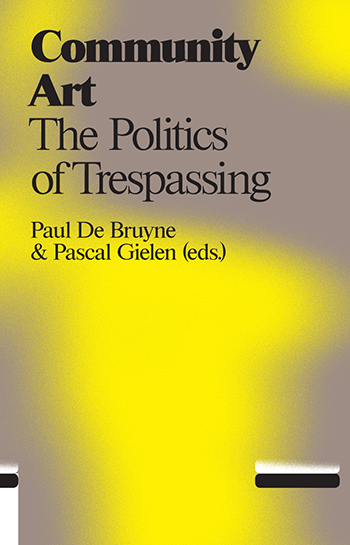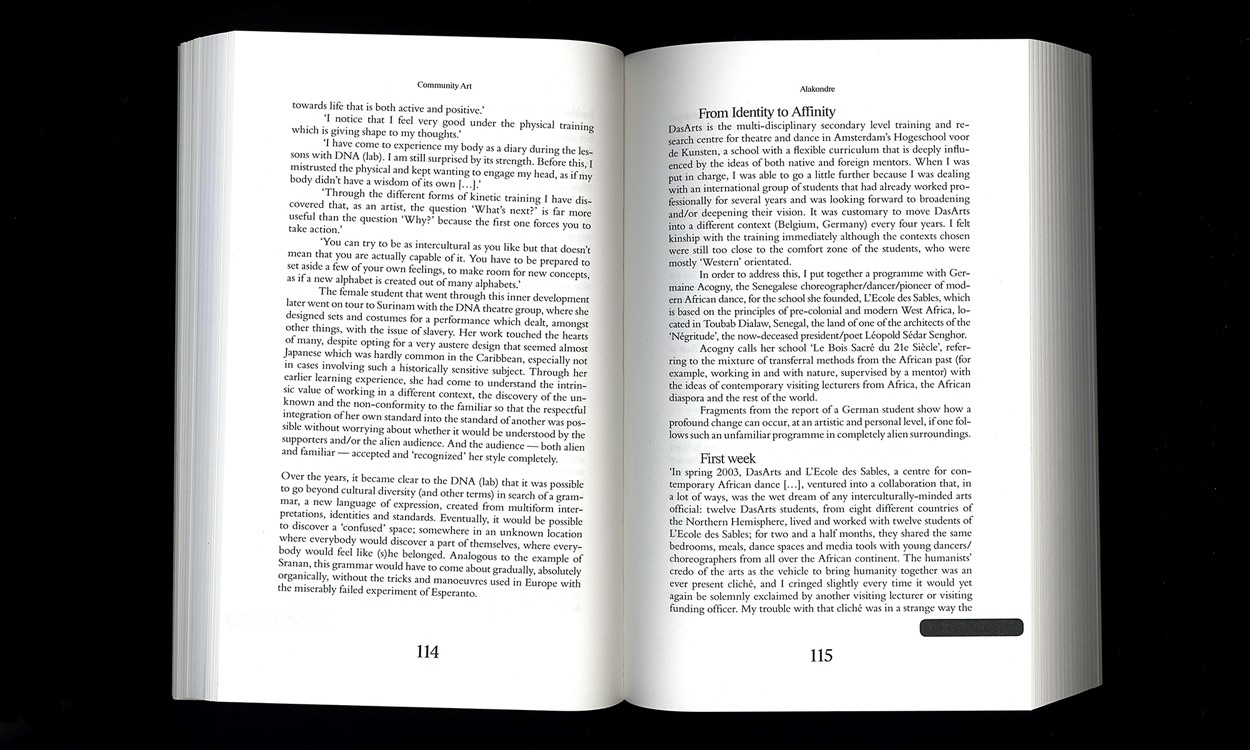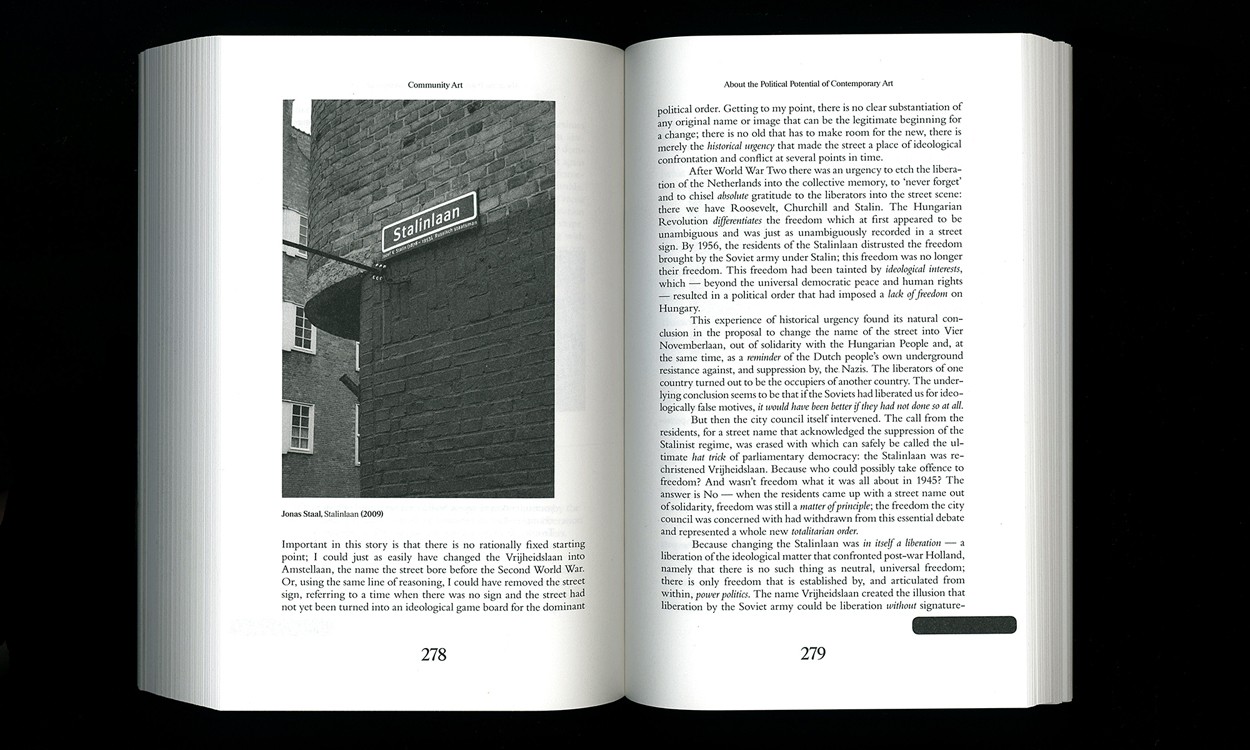Community Art
The Politics of Trespassing

UNAVAILABLE
- Can community art projects generate social change?
- Artists, sociologists, cultural critics and philosophers offer a new critical definition of community art
Editors: Paul De Bruyne, Pascal Gielen
Design: Metahaven
Series: Antennae, Arts in Society
2011, Valiz | supported by Fontys College for the Arts, Tilburg | paperback | 374 pp. | 21 x 13,5 cm (h x w) | English | ISBN 978-90-78088-50-9
Table of contents (pdf)
Introduction (pdf)
About the authors (pdf)
‘Every kind of change belongs to a form of community art,’ states the Italian philosopher Antonio Negri. This is the inverse of the premise that community art can be an integral component of desired social changes. Negri confronts community art, its supporters and critics with a challenging responsibility, and extends this to include everyone who wants to bring about change in social, political, economic, technological or ecological arenas. Communal and artistic thinking go hand in hand. In Community Art, visual and performing artists and theorists employ diverse modes of thinking and writing to explore the practices and concepts of community art in western and non-western societies. The book does not offer a cut-and-dried theoretical model, but presents a new critical reformulation of community art in society.
Contributors: Tilde Björfors, Bertus Borgers, Paul De Bruyne, Luigi Coppola, An de bisschop, Miguel Escobar Varela, Jan Fabre, Alison M. Friedman, Pascal Gielen, Sonja Lavaert, Carol Martin, Antonio Negri, Alida Neslo, Tessa Overbeek, Lionel Popkin, Richard Schechner, Hein Schoer, Ricky Seabra, Jonas Staal, Klaas Tindemans, Luk Van den Dries, Quirijn Lennert van den Hoogen, Hans van Maanen, Bart Van Nuffelen, Karel Vanhaesebrouck, Zhang Changcheng










